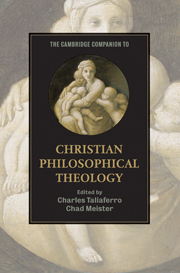16 - Heaven and hell
from Part II - God in relation to creation
Published online by Cambridge University Press: 28 May 2010
Summary
The doctrines of heaven and hell are climactic components in a dramatic narrative that elevates the meaning and significance of our lives to epic proportions. At the center of this drama is the eternal God, in whose image we were created for the purpose of knowing and loving him. As free actors in this divine drama, we may choose whether or not we accept his will for our lives, with consequences of monumental import. To accept his grace is to participate in the eternal joy and satisfaction that will result when his work of redemption is complete and his will is done on earth, as it is in heaven. To reject his grace is to decline the role God intended for us and thereby to choose for ourselves eternal misery and suffering. There are versions of the doctrines of heaven and hell in religions other than Christianity, but the uniquely Christian picture of God shapes these doctrines in a distinctive way. In particular, the Christian doctrine that the one God exists in three persons gives vivid expression to the claim that God is love in his eternal nature, and created us to share in the loving relationship of the Trinity. The Christian doctrines of the Incarnation, Atonement, and Resurrection of Jesus reveal the love of God for us and the extent of his desire to be in relationship with us.
- Type
- Chapter
- Information
- The Cambridge Companion to Christian Philosophical Theology , pp. 238 - 252Publisher: Cambridge University PressPrint publication year: 2009



